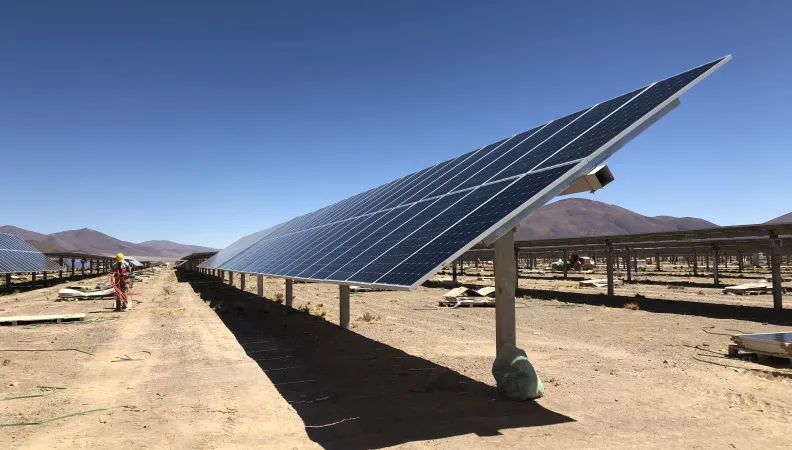Share the page
“3 questions to” Thomas Bonnisseau, ESG expert for the Altiplano 200 project in Argentina
Published on

In 2019, PROPARCO allocated a USD 50m loan to the French company NEOEN for the implementation of the Altiplano 200 photovoltaic project, located at an altitude of 4,000 meters in Argentina. For this operation, PROPARCO also assisted the developer and builder with the management of the environmental and social (E&S) risks.
1. What were the issues involved in this solar power plant?
Argentina has strong renewable energy potential. The Altiplano 200 solar power plant benefits from one of the sunniest climates in the world. This 208 MWc power plant is located at over 4,000 meters of altitude in the Salta region. It will allow the country to step up its policy for a greener energy mix.
This solar power plant is the result of a merger of the La Puna (107 MWc) and Altiplano (101 MWc) projects. The power plant, which is wholly-owned by NEOEN, will be directly connected to Argentina’s high-voltage grid and will sell the electricity generated to the national operator CAMMESA. Its commissioning is scheduled in 2020.
2. What does PROPARCO’s operation involve?
Argentina has implemented an incentive policy to promote foreign investments in this type of project.
PROPARCO has allocated a USD 50m loan to NEOEN for the construction of the Altiplano 200 solar power plant. It has also played a key role in structuring this project. For this operation, it syndicated the participation of DEG and European development banks via the Interact Climate Change Facility (ICCF). The remainder of the financing was made up of an export credit tranche provided by KfW IPEX-Bank and Société Générale, a guarantee covered by the Public Investment Bank (BPI).
PROPARCO also conducted an environmental and social (E&S) compliance mission during the project appraisal in 2018. On-site interviews were carried out with the NEOEN team, the builder (TSK-Gensun), the communities and local authorities. This risk assessment phase was completed with a review of the E&S documents (impact assessments, permits, EPC and O&M contracts, etc.). The Environmental and Social Action Plan (ESAP) resulted in the implementation of satisfactory measures to manage the risks identified. The main E&S risks were related to health, safety on the site, working conditions at high altitude, water resources management in an arid environment, waste management, biodiversity management in the area, and the management of relations with local communities.
3. What are the expected effects on the climate and impacts on local development?
This solar project is fully in line with Argentina’s low-carbon development and energy mix policy. It will reduce emissions by 234,000 tons of CO2,eq a year – 4,860,000 tCO2,eq during the lifespan of the project. Furthermore, in the last inventory of Argentina’s greenhouse gas emissions, the energy sector accounted for 43% of emissions. The diversification of the energy mix is one of the two main policy objectives in the energy sector, along with the promotion of a rational and efficient use of energy.
The construction of this power plant will have a number of positive benefits. The project will in particular create or support 18 direct jobs and over 2,000 indirect jobs – induced and secondary – (including 140 jobs during the construction phase) in the three years following the start of the construction.
